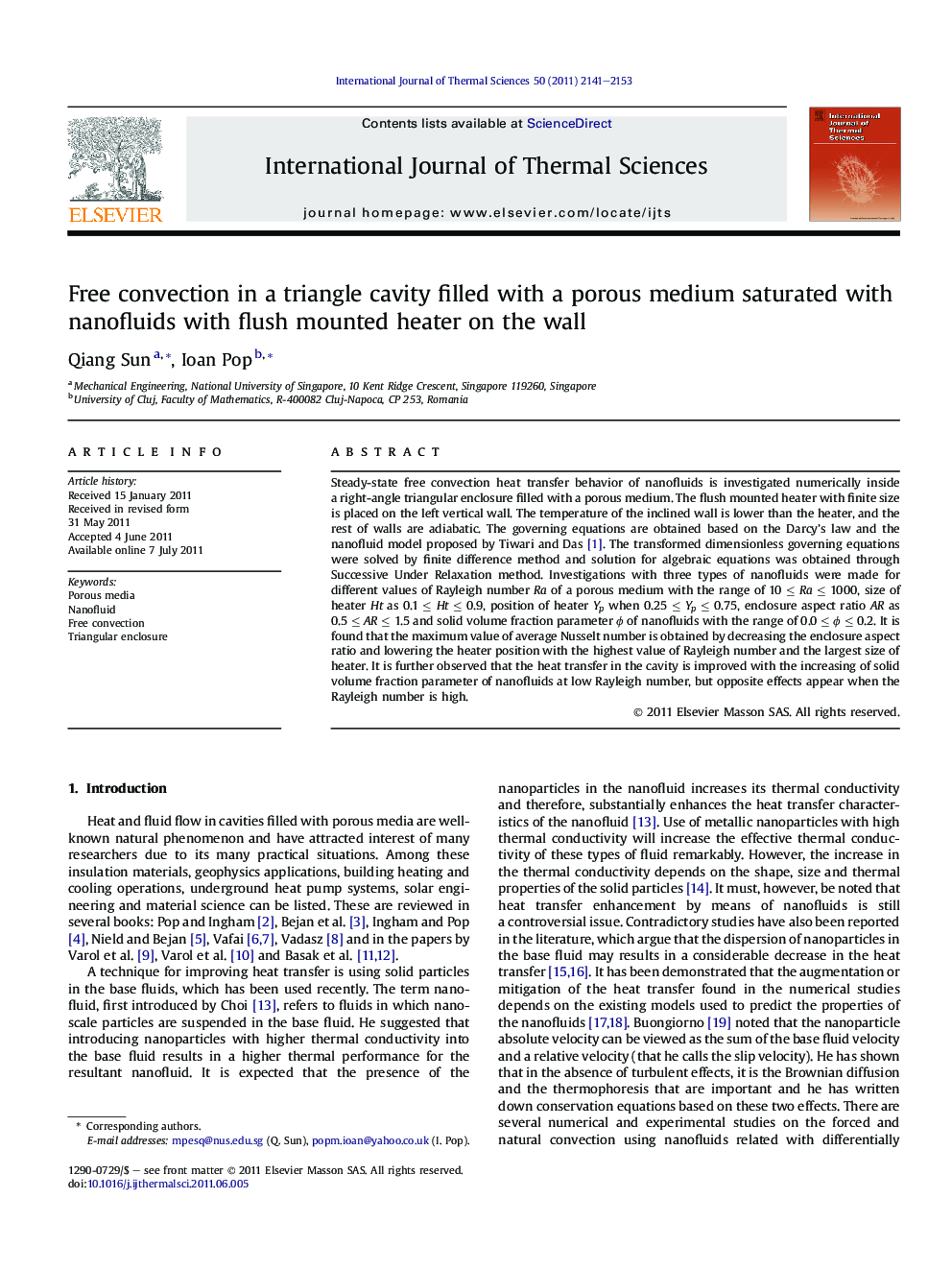| Article ID | Journal | Published Year | Pages | File Type |
|---|---|---|---|---|
| 670081 | International Journal of Thermal Sciences | 2011 | 13 Pages |
Steady-state free convection heat transfer behavior of nanofluids is investigated numerically inside a right-angle triangular enclosure filled with a porous medium. The flush mounted heater with finite size is placed on the left vertical wall. The temperature of the inclined wall is lower than the heater, and the rest of walls are adiabatic. The governing equations are obtained based on the Darcy’s law and the nanofluid model proposed by Tiwari and Das [1]. The transformed dimensionless governing equations were solved by finite difference method and solution for algebraic equations was obtained through Successive Under Relaxation method. Investigations with three types of nanofluids were made for different values of Rayleigh number Ra of a porous medium with the range of 10 ≤ Ra ≤ 1000, size of heater Ht as 0.1 ≤ Ht ≤ 0.9, position of heater Yp when 0.25 ≤ Yp ≤ 0.75, enclosure aspect ratio AR as 0.5 ≤ AR ≤ 1.5 and solid volume fraction parameter ϕ of nanofluids with the range of 0.0 ≤ ϕ ≤ 0.2. It is found that the maximum value of average Nusselt number is obtained by decreasing the enclosure aspect ratio and lowering the heater position with the highest value of Rayleigh number and the largest size of heater. It is further observed that the heat transfer in the cavity is improved with the increasing of solid volume fraction parameter of nanofluids at low Rayleigh number, but opposite effects appear when the Rayleigh number is high.
► Free convection heat transfer of nanofluids in triangular cavity with porous medium. ► Maximum value of average Nusselt number at highest value of Rayleigh (Ra) number. ► Heat transfer improved with high solid volume fraction of nanofluid at low Ra number. ► Negative effects on heat transfer by raising solid volume fraction at high Ra number.
